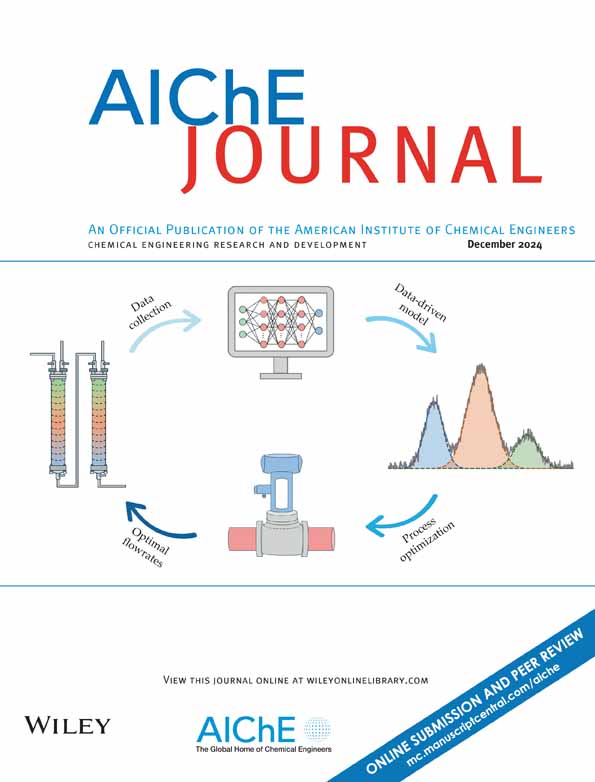Engineering single-atom equivalent trapping site for Photothermal CO2 selective hydrogenation
IF 3.5
3区 工程技术
Q2 ENGINEERING, CHEMICAL
引用次数: 0
Abstract
Photothermal CO2 hydrogenation into value-added products represents an optimal strategy for simultaneously addressing energy and environmental crises. However, achieving high production with high selectivity for target products remains a grand challenge. Herein, we constructed an S-scheme ZnO/CeO2 decorated by a bifunctional Pt cocatalyst. This photothermal catalyst exhibits both remarkable yield and selectivity of the CO product. The bifunctional Pt nanoparticles can effectively enhance the separation and utilization of charge carriers, facilitating this reaction. Notably, characterization techniques, in situ experiments, and theoretical simulations have demonstrated that the generation of active surface lattice oxygen and oxygen vacancies leads to a trapping effect on carbon atoms and oxygen atoms in CO, thereby playing a crucial role in modulating CO selectivity comparable to the impact of single-atom metals. Integrating Pt nanoparticles to promote reaction and CO-sensitive supports for improved CO selectivity offers novel insights into designing photothermal catalysts for efficient CO2 hydrogenation.光热CO2选择性氢化的工程单原子等效捕获点
光热CO2加氢转化为增值产品是同时解决能源和环境危机的最佳策略。然而,实现目标产品的高选择性高产仍然是一个巨大的挑战。在此,我们构建了一个由双功能Pt助催化剂修饰的S-scheme ZnO/CeO2。该光热催化剂具有良好的CO产率和选择性。双功能Pt纳米粒子能有效地增强载流子的分离和利用,促进了该反应的发生。值得注意的是,表征技术、原位实验和理论模拟表明,活性表面晶格氧和氧空位的产生导致CO中碳原子和氧原子的捕获效应,从而在调节CO选择性方面起着至关重要的作用,可与单原子金属的影响相比较。整合铂纳米颗粒促进反应和CO敏感支持提高CO选择性为设计光热催化剂有效的CO2加氢提供了新的见解。
本文章由计算机程序翻译,如有差异,请以英文原文为准。
求助全文
约1分钟内获得全文
求助全文
来源期刊

AIChE Journal
工程技术-工程:化工
CiteScore
7.10
自引率
10.80%
发文量
411
审稿时长
3.6 months
期刊介绍:
The AIChE Journal is the premier research monthly in chemical engineering and related fields. This peer-reviewed and broad-based journal reports on the most important and latest technological advances in core areas of chemical engineering as well as in other relevant engineering disciplines. To keep abreast with the progressive outlook of the profession, the Journal has been expanding the scope of its editorial contents to include such fast developing areas as biotechnology, electrochemical engineering, and environmental engineering.
The AIChE Journal is indeed the global communications vehicle for the world-renowned researchers to exchange top-notch research findings with one another. Subscribing to the AIChE Journal is like having immediate access to nine topical journals in the field.
Articles are categorized according to the following topical areas:
Biomolecular Engineering, Bioengineering, Biochemicals, Biofuels, and Food
Inorganic Materials: Synthesis and Processing
Particle Technology and Fluidization
Process Systems Engineering
Reaction Engineering, Kinetics and Catalysis
Separations: Materials, Devices and Processes
Soft Materials: Synthesis, Processing and Products
Thermodynamics and Molecular-Scale Phenomena
Transport Phenomena and Fluid Mechanics.
 求助内容:
求助内容: 应助结果提醒方式:
应助结果提醒方式:


